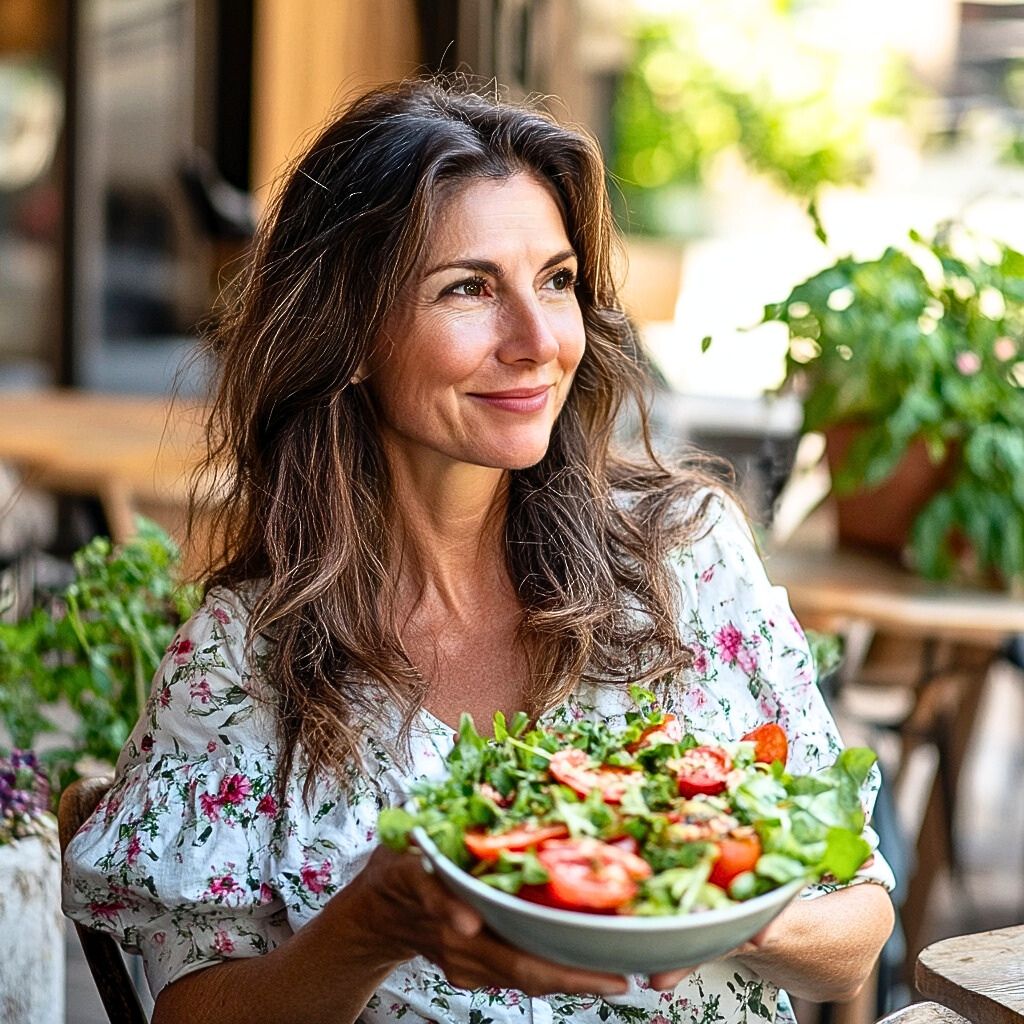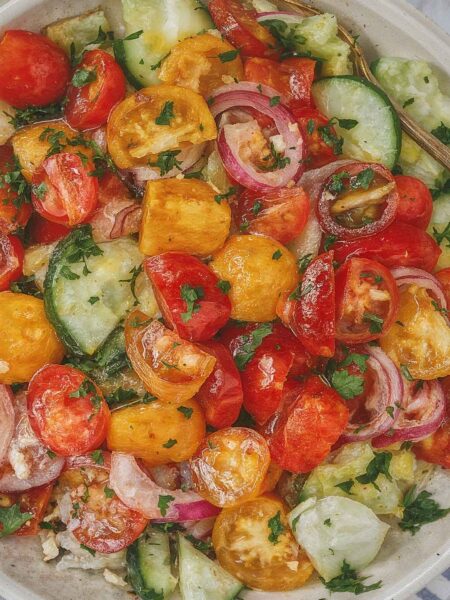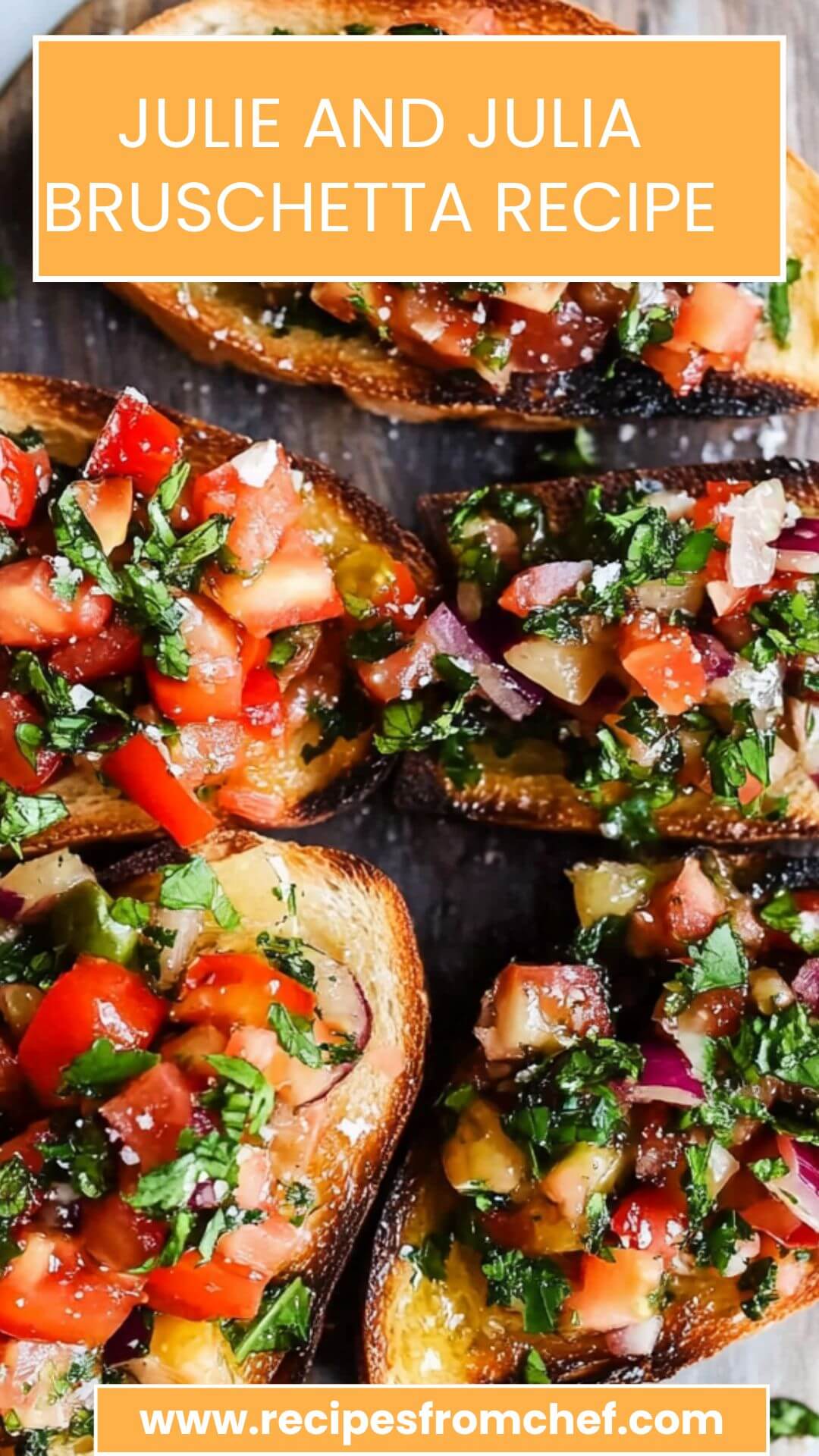Before we dive into the art of sautéing vegetables, let’s not forget that these vibrant morsels can complement a variety of dishes. They are an excellent side for grilled chicken or steak, bringing a splash of color and nutrition to any plate. You could also serve them alongside a hearty grain bowl—think quinoa or farro—adding layers of flavor and texture.
For a vegetarian option, toss them into pasta dishes or nestle them next to a fluffy risotto. Sautéed vegetables are also a perfect filling for a wrap, adding crunch and zest to your meal. After all, what’s better than a quick meal that’s both pleasing to the eye and kind to your taste buds?
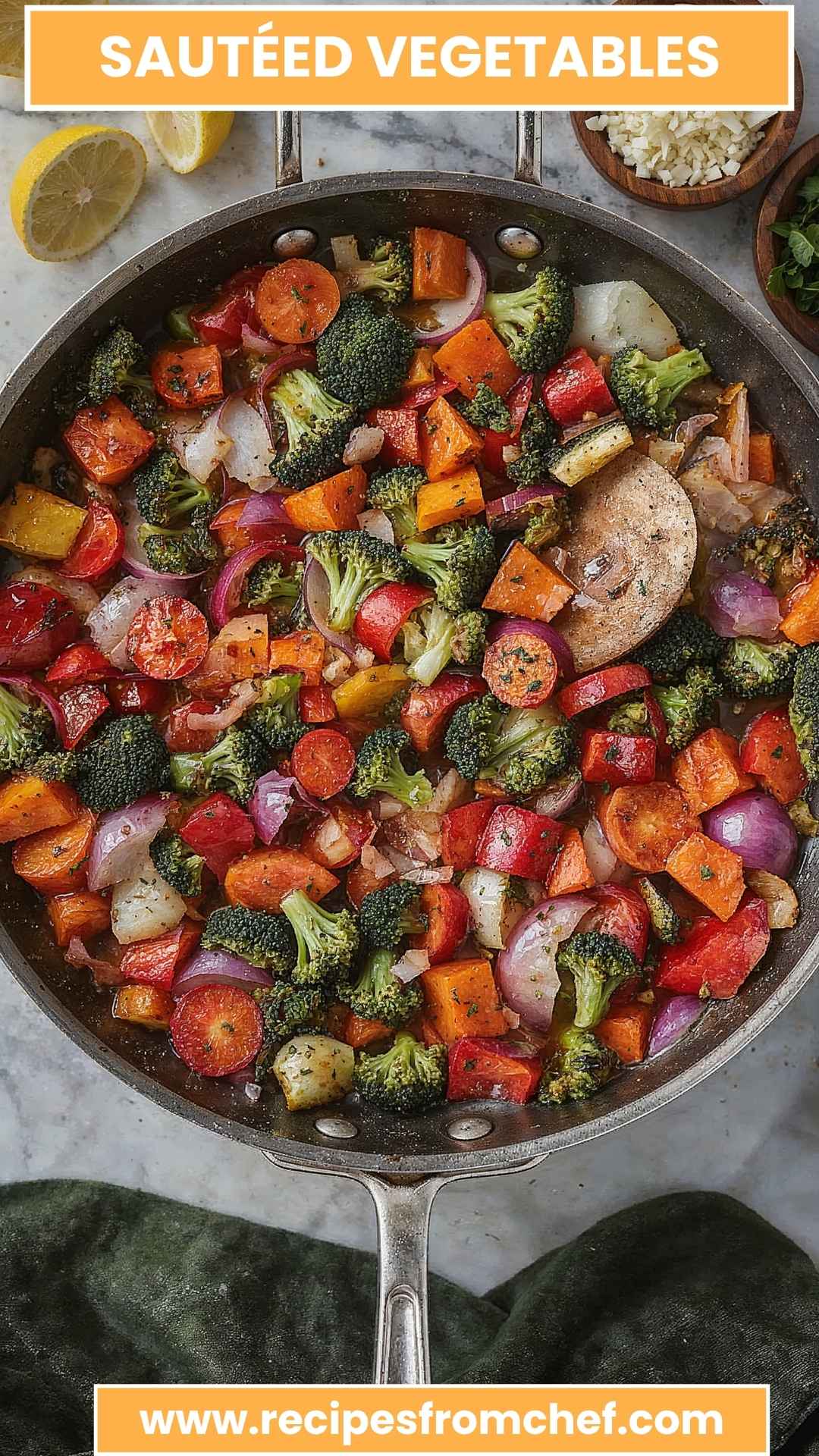
What is Sautéed Vegetables Recipe?
Sautéed vegetables feature fresh produce cooked quickly over high heat with a little fat, usually oil or butter.
This method preserves their crispness and radiates rich flavors. Think of vibrant greens, yellows, and reds dancing together in harmony on your plate. While the basic recipe can vary, the idea remains consistent: quick cooking, high heat, and time to shine for each vegetable.
What Makes This Recipe Different From Other Sautéed Vegetable Recipes?
Not all sautéed vegetable recipes are created equal. Here, we emphasize quality ingredients and a medley of spices to transform the ordinary into the extraordinary. First, choosing seasonal vegetables adds both taste and nutrition.
While many people drown their vegetables in sauces or forget to season properly, this recipe focuses on showcasing the veggies’ natural flavors. The addition of fresh herbs and a splash of lemon juice at the end elevates the dish, ensuring it’s never dull.
How Does It Taste Like?
Imagine opening a fresh box of veggies, the scent hitting you like an unexpected summer breeze. When sautéed, they’re warm and inviting.
Each bite is a crunchy, savory medley. The bell peppers sing with sweetness, the broccoli offers a mild earthiness, and the garlic? Oh, the garlic simply brings all the flavors together, creating an orchestra of tastes right in your mouth.
Ingredients You’ll Need To Make This Dish:
To create the perfect sautéed vegetables, you’ll want a well-selected pool of ingredients. Here’s what you need:
- 1 medium red bell pepper, chopped
- ½ medium red onion, chopped (about 1 cup)
- 2 medium carrots, peeled and sliced fairly thin (about 1 cup)
- 2½ cups broccoli florets (cut into bite-size pieces)
- 1 medium yellow squash, halved and sliced
- 1½ tsp fresh lemon juice
- 1½ tsp minced garlic
- 1½ tsp fresh thyme leaves
- 3 Tbsp olive oil
- Salt and freshly ground black pepper to taste
- ¼ cup grated Parmesan cheese (optional, for serving)
- 2 Tbsp chopped fresh parsley
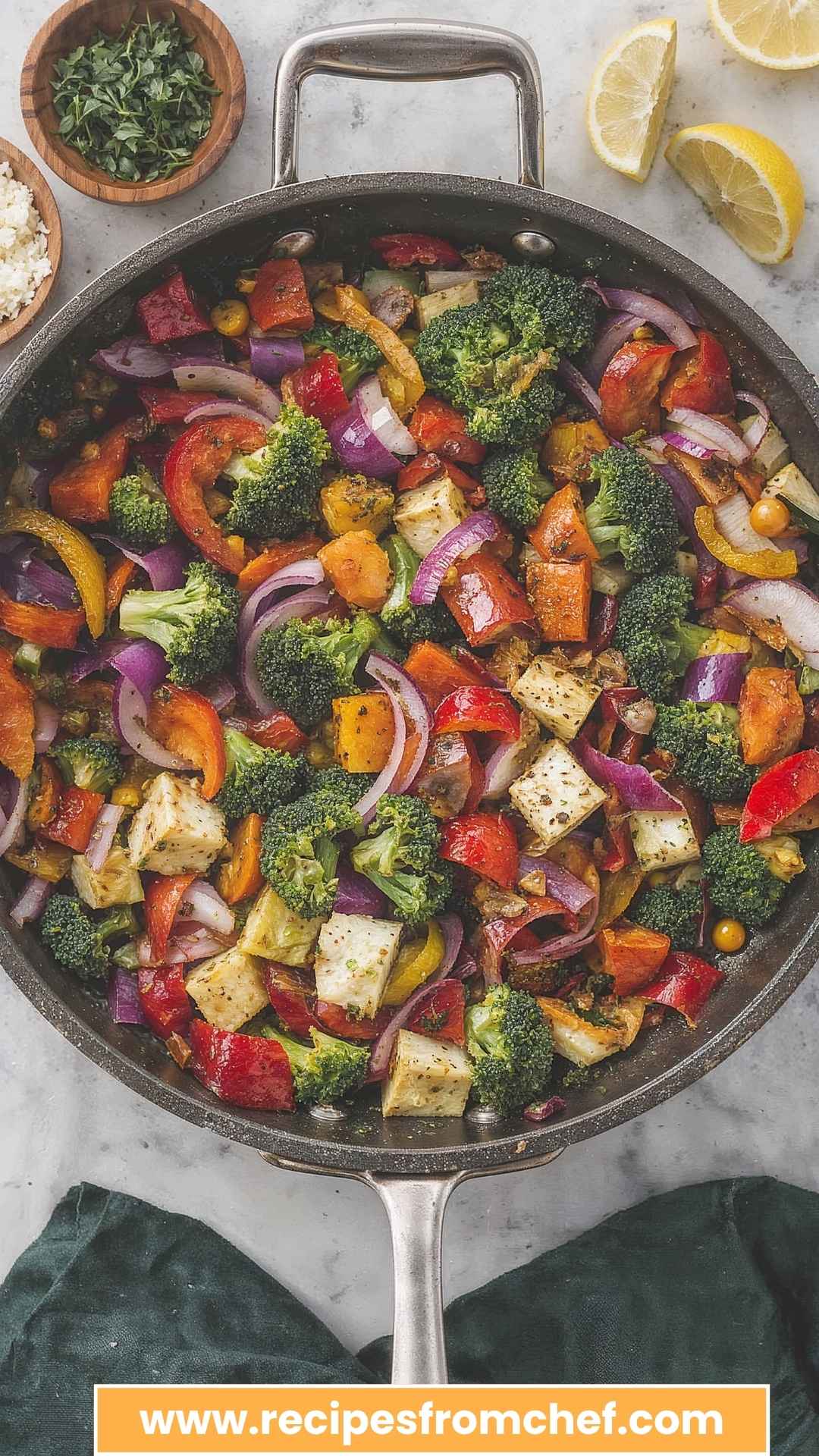
Step-by-Step Instructions to Sauté Vegetables
Step 1: Prepare Your Ingredients
Start by washing and chopping your vegetables. Ensure all pieces are roughly the same size for even cooking. Trust me—this small act can save you from bites that are either undercooked or mushy.
Step 2: Heat the Pan
Next, choose a large sauté pan and heat your olive oil over medium-high heat. You want the oil shimmering, which usually takes about a minute. If it starts to smoke, turn down the heat.
Step 3: Add Aromatics
Once the oil is ready, toss in the chopped red onion and minced garlic. Sauté for about two minutes or until the onion turns translucent. The aroma? Delectable.
Step 4: Introduce the Veggies
Now it’s time to add the hardest vegetables first—carrots and broccoli. Stir them in and let them cook for about 4–5 minutes, stirring occasionally. This way, they maintain a nice crunch while absorbing that garlicky goodness.
Step 5: Incorporate the Bell Peppers and Squash
Add the bell peppers and yellow squash, giving everything a good stir. Allow them to sauté for another 3–4 minutes, showcasing their colors. You want a slight char but not to overcook them.
Step 6: Season and Finish
Once the vegetables are tender but still crisp, sprinkle in thyme leaves, salt, and pepper. Finally, drizzle on the lemon juice and give everything a last toss. Remove from heat before serving.
Step 7: Garnish and Serve
To take the dish from good to spectacular, sprinkle some fresh parsley and grated Parmesan on top. Voilà! Your sautéed veggies are ready to impress.
Tips & Tricks On Making Sautéed Vegetables Recipe
Here are a few pointers to ensure your sautéed veggies shine:
- Prep Ahead: Chop your veggies in advance. This saves time and makes cooking stress-free.
- Don’t Crowd the Pan: If you fill your pan too much, you’ll steam instead of sauté. This quashes that desirable char.
- Experiment: Feel free to add spices like cumin, paprika, or crushed red pepper for a different flavor profile.
- Choose the Right Oil: Use an oil with a high smoke point. Olive oil is excellent, but avocado oil works beautifully too.
- Taste as You Go: Don’t hesitate to adjust seasoning throughout. Your palate is your best guide.
Nutrition Information
Estimated nutrition information per serving (not including optional cheese):
- Calories: 150
- Protein: 3g
- Carbohydrates: 12g
- Fat: 11g
- Fiber: 4g
- Sugar: 3g
- Sodium: < 100mg (varies with salt addition)
How Do I Store This Dish?
If you have leftovers, cool the vegetables to room temperature. Then transfer them to an airtight container. They’ll stay fresh in the fridge for up to 3 days. Reheat in a pan over low heat or in the microwave until warmed through.
What Other Substitutes Can You Use in Sautéed Vegetables Recipe?
- Spinach: Swap for kale or even swiss chard for a different nutritional profile. These leafy greens add a soft texture and iron boost.
- Zucchini: In place of yellow squash, zucchini offers a similar delicate flavor and texture.
- Bell Peppers: Try using different colors like green, orange, or even spicy peppers for extra kick.
- Mushrooms: They make a great addition, adding umami. Just sauté them until golden brown before adding other veggies for that extra punch.
- Green Beans: They add a satisfying crunch. Just trim the ends and sauté them for a delightful twist.

Conclusion
Sautéed vegetables are the unsung heroes of quick meals. They brighten any dish and can easily steal the show. With the right technique and ingredients, they can sing with flavor and add vibrancy to your dining experience.
So gather those beautiful vegetables and let them bask in the glory of your sauté pan. Bon appétit! As you prepare this delicious recipe, remember the joy of creating a dish that’s not just nutritious, but absolutely delightful. Happy cooking!
You’ll also like the following recipes!
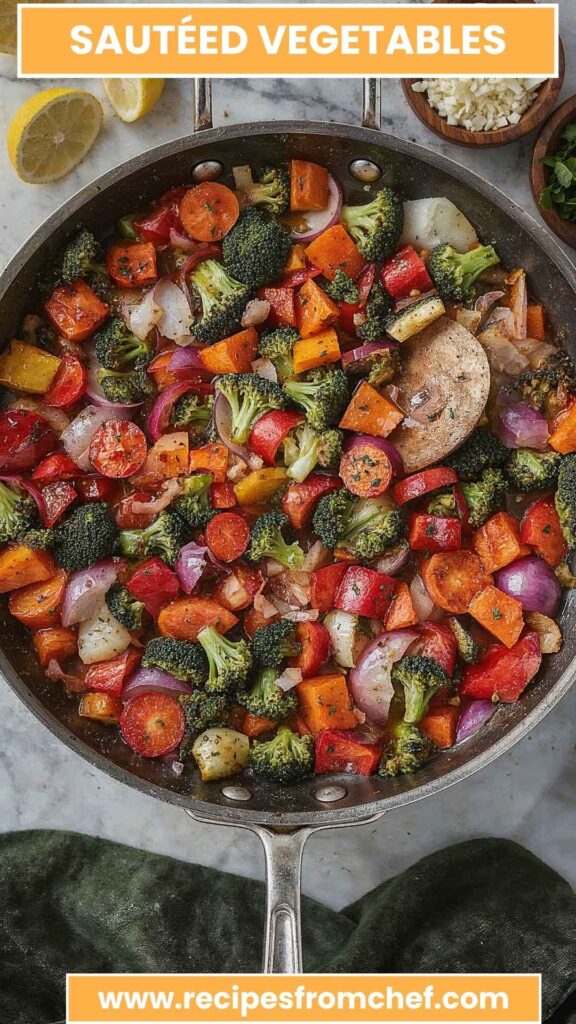
Sautéed Vegetables – Recipes From Chef
Description
Have you ever walked into the kitchen with a fridge full of colorful veggies, wondering what to do with them? That was me last week.
I had fresh broccoli, bell peppers that looked like they had been in a beauty contest, and a few stubborn carrots lingering at the back. After only a moment's hesitation, I decided to sauté them. Ah, the magic of sautéing! It’s less of a technique and more of a love language spoken between heat and fresh produce.
Sautéed vegetables are not just easy to whip up; they also harness the essence of the veggies' natural flavors while adding a slight char and depth through caramelization. And here's the kicker: with the right ingredients and a few tricks, you can elevate a simple dish into something downright extraordinary.
Ingredients
Instructions
Step 1: Prepare Your Ingredients
-
Start by washing and chopping your vegetables. Ensure all pieces are roughly the same size for even cooking. Trust me—this small act can save you from bites that are either undercooked or mushy.
Step 2: Heat the Pan
-
Next, choose a large sauté pan and heat your olive oil over medium-high heat. You want the oil shimmering, which usually takes about a minute. If it starts to smoke, turn down the heat.
Step 3: Add Aromatics
-
Once the oil is ready, toss in the chopped red onion and minced garlic. Sauté for about two minutes or until the onion turns translucent. The aroma? Delectable.
Step 4: Introduce the Veggies
-
Now it’s time to add the hardest vegetables first—carrots and broccoli. Stir them in and let them cook for about 4–5 minutes, stirring occasionally. This way, they maintain a nice crunch while absorbing that garlicky goodness.
Step 5: Incorporate the Bell Peppers and Squash
-
Add the bell peppers and yellow squash, giving everything a good stir. Allow them to sauté for another 3–4 minutes, showcasing their colors. You want a slight char but not to overcook them.
Step 6: Season and Finish
-
Once the vegetables are tender but still crisp, sprinkle in thyme leaves, salt, and pepper. Finally, drizzle on the lemon juice and give everything a last toss. Remove from heat before serving.
Step 7: Garnish and Serve
-
To take the dish from good to spectacular, sprinkle some fresh parsley and grated Parmesan on top. Voilà! Your sautéed veggies are ready to impress.
Nutrition Facts
Servings 4
- Amount Per Serving
- Calories 150kcal
- % Daily Value *
- Total Fat 11g17%
- Sodium 100mg5%
- Total Carbohydrate 12g4%
- Dietary Fiber 4g16%
- Sugars 3g
- Protein 3g6%
* Percent Daily Values are based on a 2,000 calorie diet. Your daily value may be higher or lower depending on your calorie needs.
Note
- Prep Ahead: Chop your veggies in advance. This saves time and makes cooking stress-free.
- Don’t Crowd the Pan: If you fill your pan too much, you’ll steam instead of sauté. This quashes that desirable char.
- Experiment: Feel free to add spices like cumin, paprika, or crushed red pepper for a different flavor profile.
- Choose the Right Oil: Use an oil with a high smoke point. Olive oil is excellent, but avocado oil works beautifully too.
- Taste as You Go: Don’t hesitate to adjust seasoning throughout. Your palate is your best guide.


